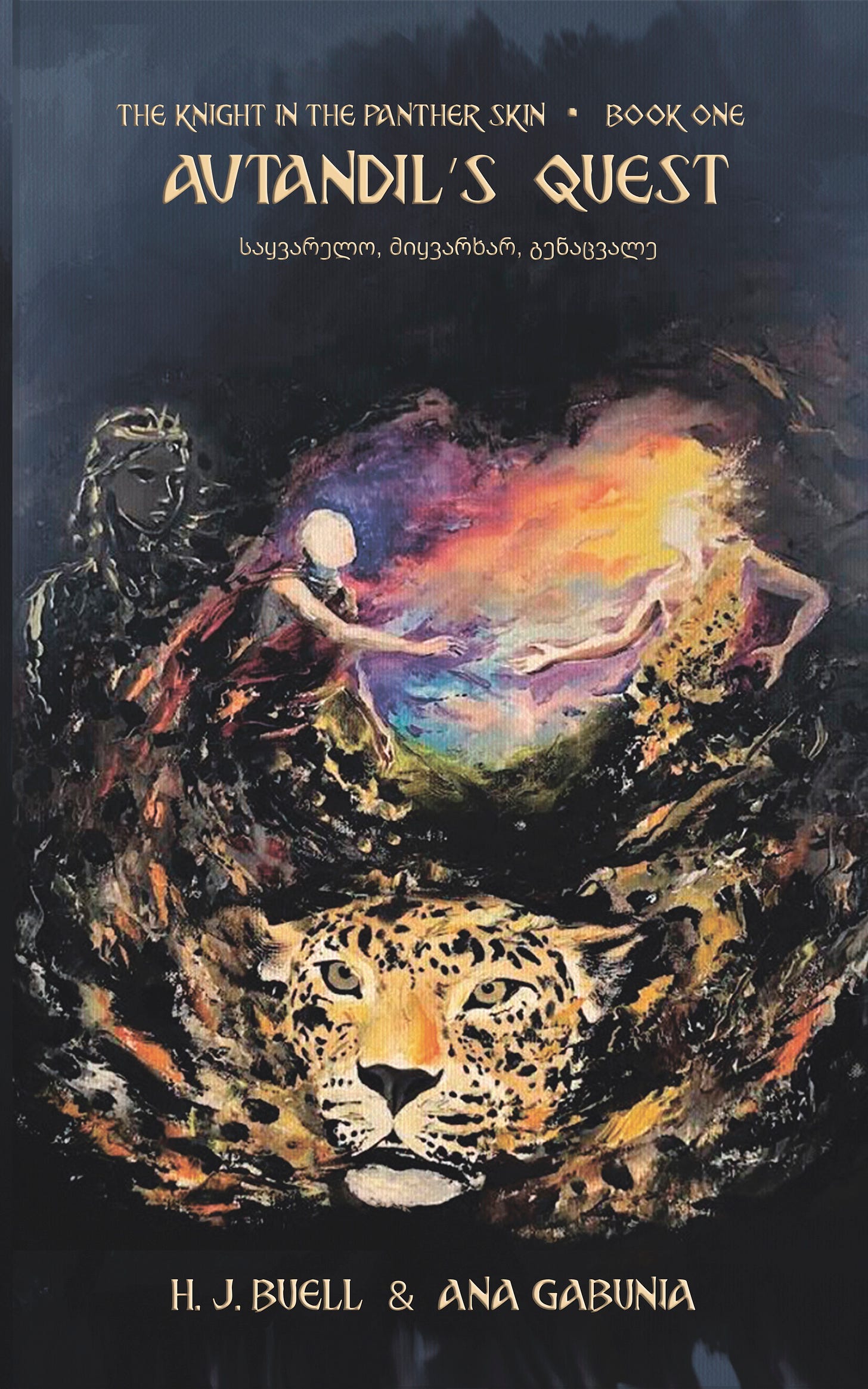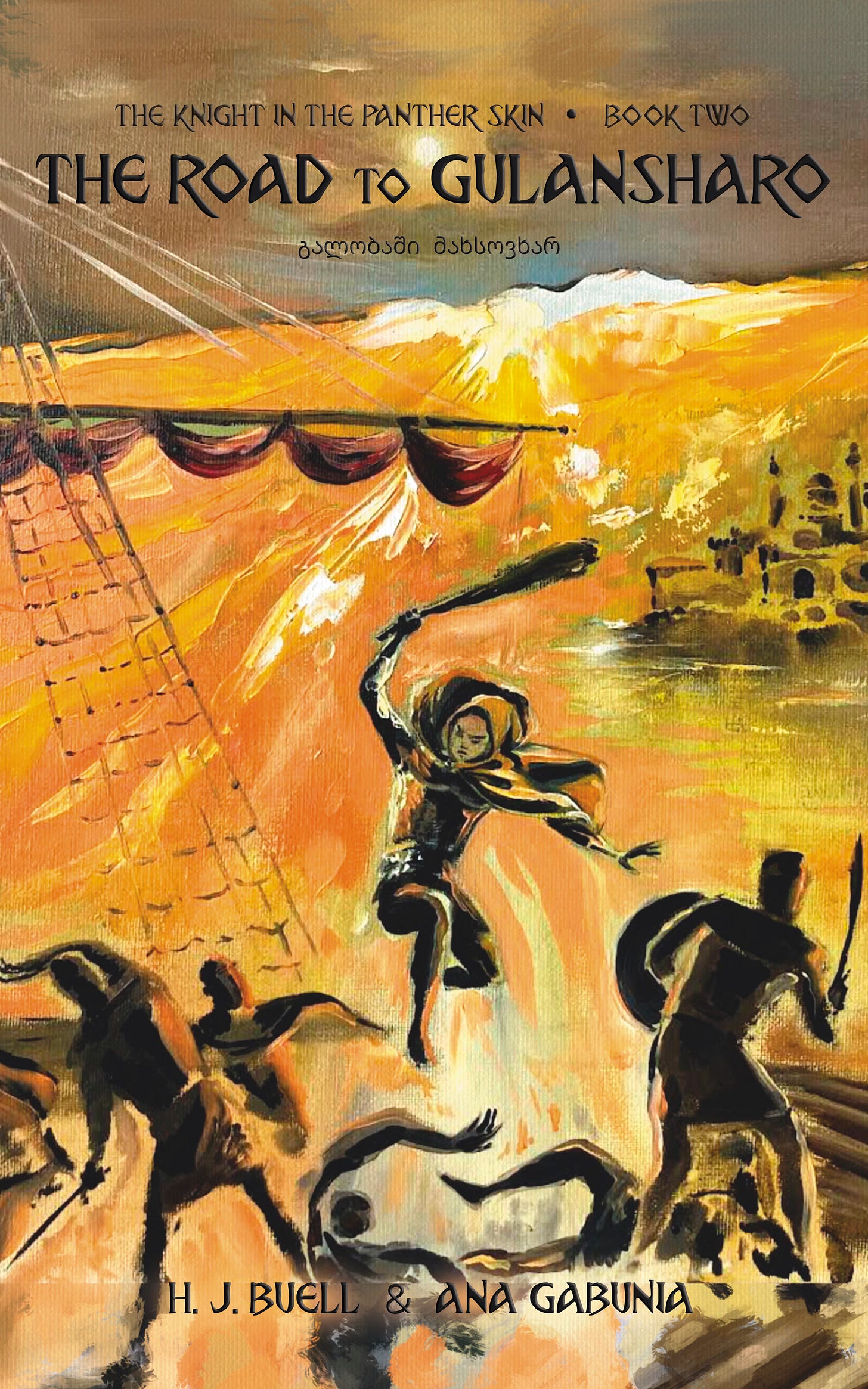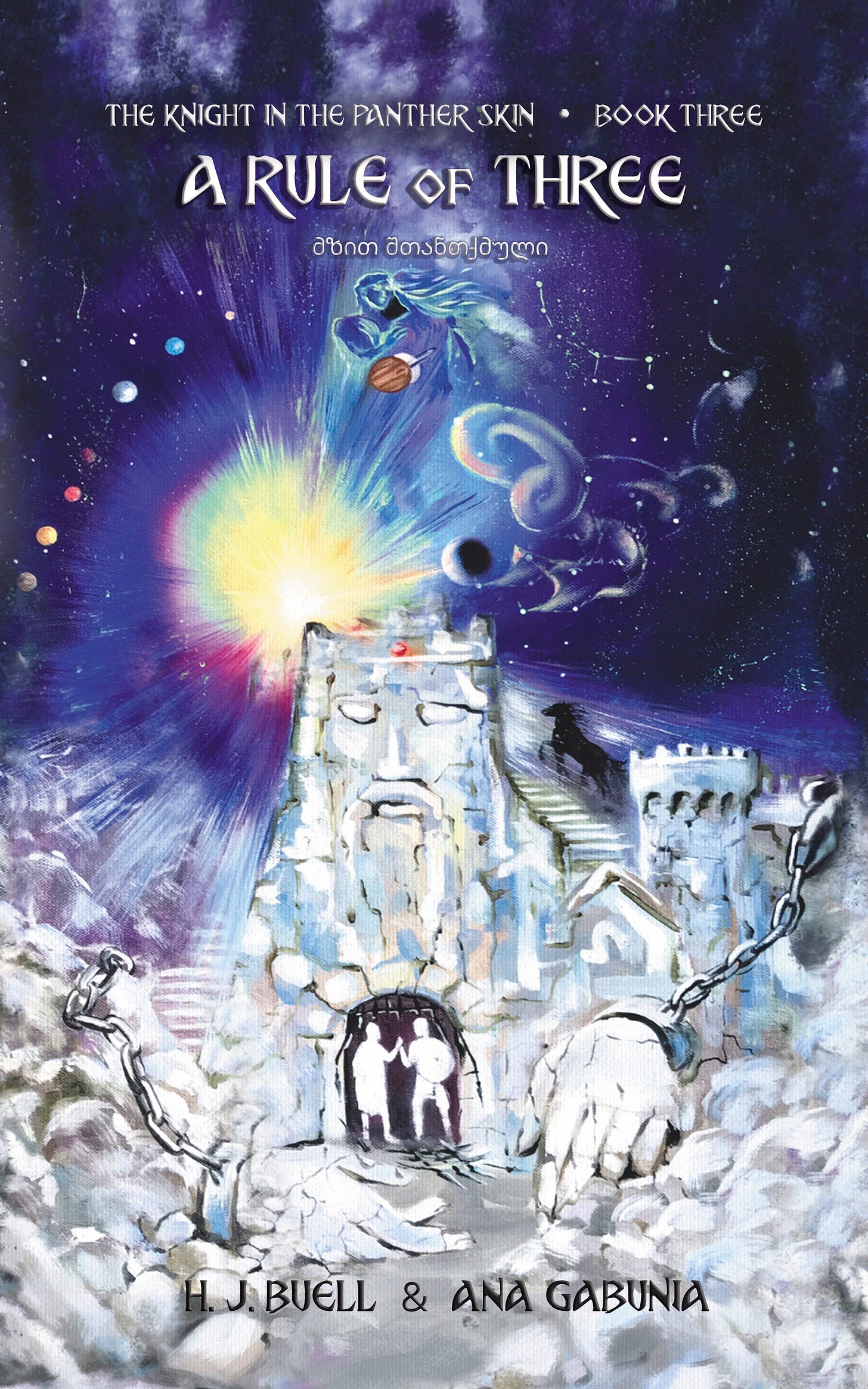The Knight in the Panther Skin Trilogy
The Knight in the Panther Skin is a 12th century epic medieval love poem, written by Shota Rustaveli, in honor and love of Tamar Mepe, the first woman to be King of Georgia.
What’s so special about The Knight in the Panther Skin?
Post cover art - Tariel Weeping at the River, by Mikhail Zichi, 1881. Created in Tbilisi, Georgia, as part of a series of 35 illustrations commissioned for The Knight in the Panther Skin, and later gifted by Zichi to the Georgian people.
The story is unique. In the average 12th century medieval tale, the strongest man in the kingdom defeats an impossibly difficult monster and goes home with the most beautiful woman in the kingdom. Everyone celebrates his greatness, her beauty, and how terrible the monster was. Those tales make for great campfire stories, and I loved every one as a child. But as an adult, I craved something more. A story that mirrored the complexities of adult life, and not the fantasies of childhood - fond as those memories are for me.
The Knight in the Panther Skin is one such tale. It tells the story of several men and women, struggling against the constraints of society, while attempting to reach goals none of them are sure they can attain. They remain devoted to their duties, their friendships, and commitments. Each of them shares philosophies and beliefs that define them in ways few heroes are cast. And above all, the root of the story centers around an eternal love.
We spent seven years translating the story from Georgian poetry and into English prose, which has been published into three books. The first book cover for Avtandil’s Quest is shown below, with the second book, The Road to Gulansharo, and the third book, A Rule of Three, shown later in this post.

1. What is this love?
To tell the story of this love, one must first delve into the formation of Georgia, from its warring and divided kingdoms. Central to the unification of those kingdoms into the nation of Georgia (Sakartvelo, in the Georgian language), we need to know the man who made that unification possible. He was King David, the Builder. A King and warrior of great stature, carrying a massive sword, ruled by an indomitable will.
Through his hands, the kingdoms were united. From him, came his daughter, Tamar. She was an equal to her father, for as Shota wrote, the children of lions are equally lions. By his hand, she was crowned King. Known as Tamar Mepe, she carried on the rule of her father, protecting her kingdom from outside invaders, and those within who sough to sow dissent.
2. How does this relate to The Knight in the Panther Skin?
Among those who served King Tamar, was a man known only as Shota Rustaveli. He was a court treasurer, yet his mind and wit were unparalleled. His position afforded him many things, but that which he desired most was beyond his grasp. He was not of noble birth, yet his heart desired the hand of King Tamar above all else.
For those who have known love from afar, the pain of wanting what cannot be had is not unfamiliar. But in the case of Shota, it ran deeper. One can believe King Tamar was not unaware of him, and perhaps knew of his affections. However, his love was both true and deep. He loved her, not his image of what she could be, or the life they might share together. And this is what sets his story apart from the ordinary.

3. What made his love special?
King Tamar was surrounded by the best men and women of her kingdom. Her father had been a leader of unparalleled wisdom and strength. Her every step had been in the shadows of those great people who protected, nurtured, and educated her. She had no lack of suitors, many interested in either of both of her beauty and power. But none of those who approached her had the mind of Shota. He alone could perhaps have won her heart, though he was wise enough to refrain from pursuing that goal.
As a man who was not a noble, had King Tamar loved him, it would have destroyed the kingdom. Everything her father had built, and what she also built during her reign as King, would have been lost. Shota knew this. Rather than take what could have been his, he chose to preserve her legacy and that of her father. Instead of professing his love for King Tamar, Shota wrote an epic medieval poem - a devotion to Georgia and of love eternal. It contained more than 6,000 lines of rhyming quatrains, and wove a story worthy of not just any King, but specifically King Tamar.
Then he disappeared from history. His story was burned by the Orthodox Church, and all written copies were lost to time. Yet, what he wrote lived on in song. Men and women of the mountains of Georgia, and other true patriots of the nation, kept the story alive for more than five hundred years. Eventually, the ruling elite of Georgia came together and put the shared verbal collective of Shota and Tamar’s story back onto paper - but that is another tale. This post is about The Knight in the Panther Skin.
4. So, what is The Knight in the Panther Skin?
Ask what love is, or ask what life means. These are deep questions, and one could argue that they are things a person must experience to know. In summary, that’s what the story is. It’s the realizations of every life not lived, and each promise left unkept. Our heroes compel, through a story of love, devotion, and above all, dedication to the deepest and most meaningful experiences one can have.
The tale is set in several countries, none of which are Georgia, by design. Shota left his words as a riddle, as was his life. Like love, one must experience it to know. And in the story, our heroes explore themselves, challenging the limits of their ability, while confronting what it means to love and to live.
The story is a national treasure of Georgia. It does not belong to me, though I spent ten years of my life there, living with the people and learning to love the culture and history. There’s a castle on every hilltop, and story behind each one. I never found them all, but I learned to be something more than a tourist. Unlike many countries I’ve lived in, I became something more from my time in Georgia. Accurately retelling this story in English prose is perhaps the greatest thing I will do in my life.
And Shota? I consider him both friend and mentor. From his words, I learned more about love and life than any of my travels ever taught me. I’m a better man from my time in Georgia, and have learned to appreciate the chasm that often exists between love and life.

5. May you enjoy the read as much as I enjoyed the journey.
As a thank you to Georgia, and out of honor and respect for King Tamar, Shota, and the patriots of Georgia, I will be sharing the entirety of my works here. The first book will be available for everyone to read, one post at a time. The second and third books will be available for paid subscribers. I hope you will enjoy the read as much as I enjoyed the journey there and back. Make sure to read the introduction to each book, as they are part of the discovery that led to these books.


